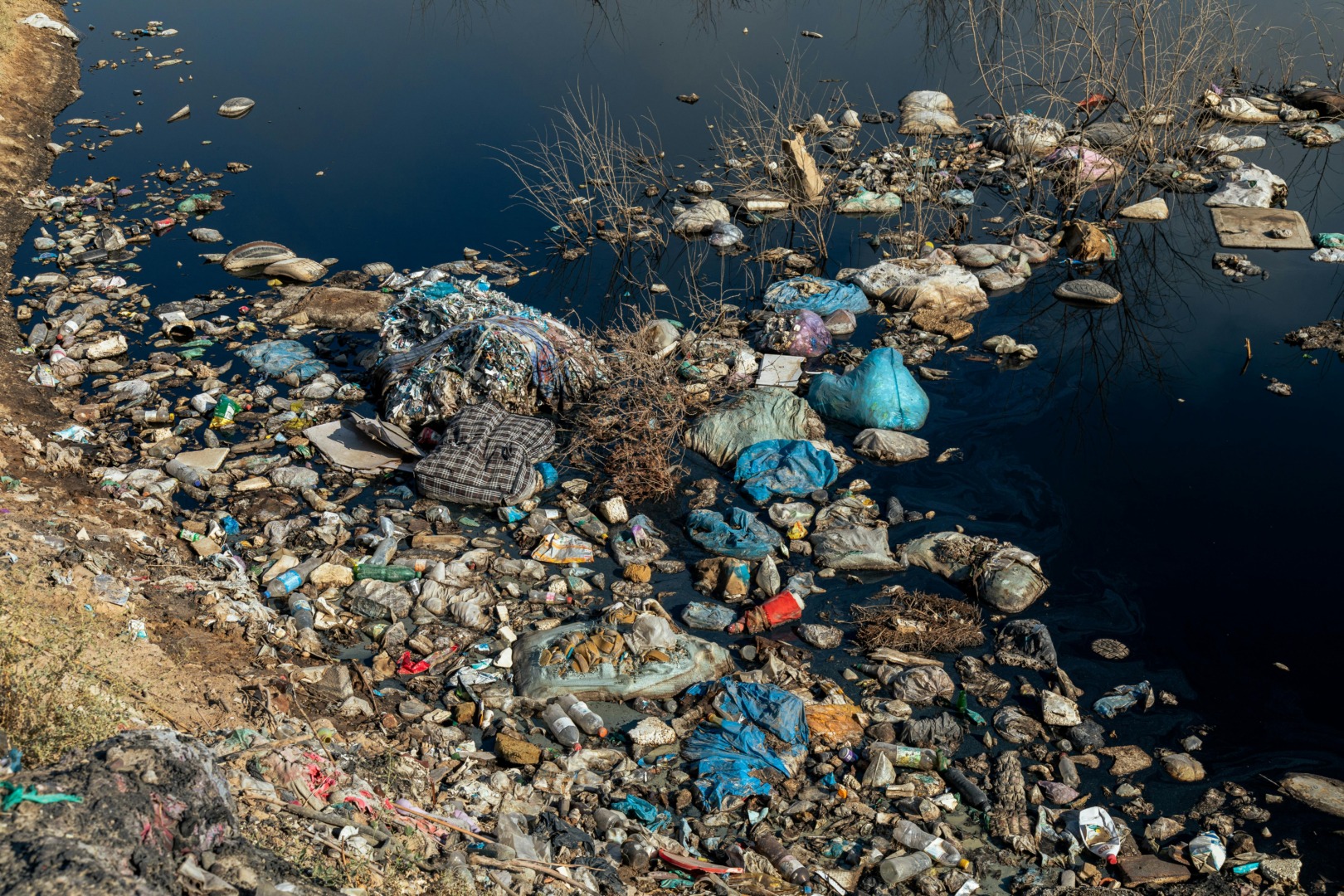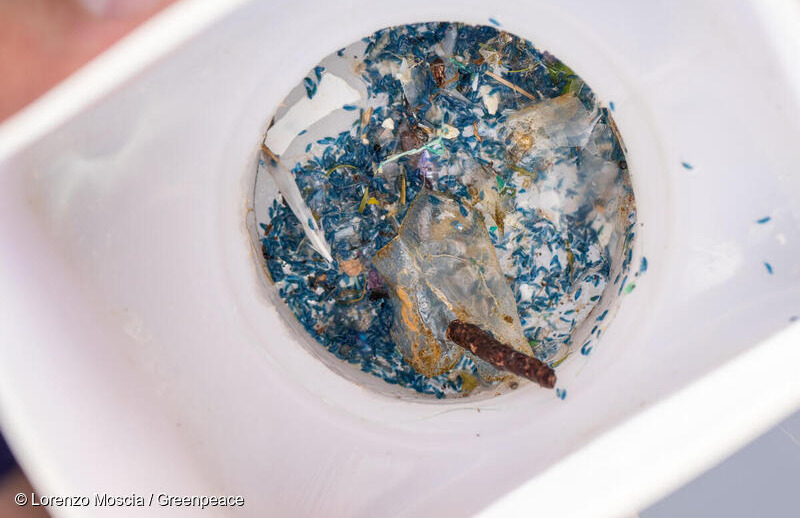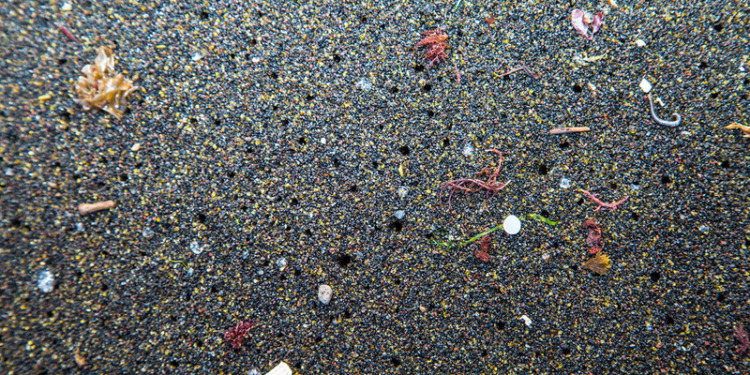Numerous publications and research findings about the increasing global plastics problems are being shared worldwide. Many focus on the proliferation of plastics everywhere, the tons produced, by which industry, how discarded plastics have become one of the more ubiquitous pollution aspects, and perhaps how solutions or mitigations can be found and implemented.
For instance, more than 430 million tons of plastic are produced each year, two-thirds of which is cast aside as waste after just one use. If trends continue, plastic waste will triple by 2060.
Eleven million metric tons of plastics enter our ocean each year, in addition to the estimated 200 million metric tons that already flow through our marine environments. At the current production rate, there will be more plastic than fish in the ocean by mid-century.

Papers and articles highlighting the potentially negative health aspects of plastics can be found in various scientific, clinical, political, industrial, and social circles. But, whether related to illness or reproductive health, there is a gaping hole in our knowledge.
The fifth round of negotiations for a United Nations Environment Programme (UNEP) Intergovernmental Negotiating Committee to Develop an International Legally Binding Instrument on Plastic Pollution will be held in Busan, South Korea, in November to finalize a Global Plastics Treaty, which is expected to include a proposed blanket exemption of plastic products for medical and health uses and responses to public health emergencies from all proposed binding provisions in the Treaty.
In an article titled “Why medical products must not be excluded from the Global Plastics Treaty,” published in the Lancet on November 2, 2024, the authors make an eminently sensible case for dealing in any Treaty with medical aspects. But much more needs to be researched and dealt with in terms of micro and nano plastic effects on human animal, and plant health, including reproductive health.
A deeper examination and broader perspective are described in the recently published article in the Journal of Global, Public and One Health, titled “The Plastics Pandemic: Diseases of unknown origin, declining fertility, and the wider implications” by Dr. Ok Pannenborg and Richard Seifman, and a companion editorial titled “One Health: Where are we now and where to go?” by Dr. Ulrich Laaser.
What is suggested is that if there is agreement on a Global Plastics Treaty in Busan, Korea, and commitment and funds for further in-depth research, the creation of an “International Plastics Control Agency” could be or should be on the table.
Plastics Are Everywhere
Over the last 100 years, the health status of populations around the world has improved dramatically, partly driven by countries becoming richer, coupled with higher levels of education, knowledge, and the expansion of research and scientific findings.
Numerically, the world is blessed with ever-better health outcomes in terms of average life expectancy, lower death rates, and, in many or even most cases, significant increases in quality of life.
This is not to discount the enormous suffering we have seen in terms of wars and conflicts. But until recently most countries experienced poverty reductions and positive socio-economic development. Only recently these trends have stalled (see: “How the Poor Stopped Catching Up” and “End of the Road”).
At the same time, we are seeing a longer and longer list of diseases whose origins or causes we have little or no idea about.
The timing of these patterns coincides with the significant plastic expansion. Few of the readers’ grandparents or great-grandparents were exposed to plastics during their youth, with macro plastics coming into their lives only in their middle- or old age.
Those born in the 1940s and 1950s had little exposure to plastics in their youth, but from the 1960s and ‘70s, plastics were around them in increasing measure. The famous movie, “The Graduate,” had a recent graduate, played by Dustin Hoffman, advised that his future was in plastics!
The X, Y, and Z generations were born with macro and increasingly microplastics surrounding them literally everywhere.
Most material objects in the world of the earlier generations consisted of wood, metal, glass, natural textiles, rubber, ivory, paper, stone and ceramic products, and plant- or animal-based items: Think cars, milk bottles, houses, furniture, beddings, almost everything in the home, wool, cotton, leather, and so on.
Now think today: your car is plastic primarily or plastic-based composite material, most textiles are polymer-based or mixed, most furniture is plastic-composite material, almost all packaging and bottles are synthetic, and even food and drinks contain many synthetic and petrochemical products, and so on.

A baby born today enters a plastic world (most materials in the obstetric department or clinic are plastic-based) and is wrapped in plastic and breathes (and drinks) plastic particles from minute one on earth, not to mention fetal nano-plastic exposure while still in the womb (nano plastics pass through both the brain-blood and the placental barriers).
Most breast milk in richer countries now contains micro- and nano-plastics, directly compromising neonatal and child health from the start, with potential long-term consequences for the rest of their lives (see Irédon Adjama et al., Microplastics in dairy products and human breast milk: Contamination status and greenness analysis of available analytical methods, and in Science Daily, University of Texas at El Paso, Nanoplastics and ‘forever chemicals’ disrupt molecular structures, functionality).
As with rates of growth in cancer, time and accumulation are significant variables. The older generations, even when exposed later in life, simply did not have enough time in their life to be sufficiently affected by plastic and other petrochemical products.
In contrast, younger generations have been exposed increasingly throughout their lives, allowing accumulation and time to create a build-up of micro- and nano-plastics in their bodies.
As many of us now know, few humans in the world are free from micro and nano plastics in their bodies and, with nanoplastic particles, even in their brains. Mind you, many of these may settle in the body cumulatively, not breaking down, and belong to the so-called category of forever plastics.

Micro- and Nano-Plastics and Fertility
Early concerns about how pesticides, agricultural hormones, and microplastics might influence fertility emerged in the 1960s. The fields of endocrinology (a new field at the time, with a high innovation index reputation) and toxicology were relatively successful in alerting society, governments, and regulating agencies to the potential risks for human health of the first two — pesticides and hormones — resulting in reasonably dramatic reductions of the use of pesticides and hormones in the food chain from the 1960s onward.
Microplastics came into their own regarding fertility concerns more since the 2000s but achieved much less success in terms of subsequent industrial or regulatory policy measures.
Traditionally, demographers, population specialists, and family planning experts, as well as the field of gynecology and obstetrics, have attributed falling fertility levels around the world to economic growth and higher incomes/caput, higher female education and female workforce participation, women’s emancipation, increasing costs of child-rearing, higher purchasing power (PPP), and increases in contraceptive prevalence rates.
Government concerns regarding dropping Total Fertility Rates (TFRs), resulting in a converted national population pyramid and a future shortage of a younger generation labor force, focused on policymakers and measures to address these underlying factors or causes, in addition to immigration policies. But plastics — rarely, if at all, entered the discussion.
Examples include subsidies for additional children, free nursery and primary education, childcare and subsidized nanny programs, and wider population growth incentive programs; France, South Korea, and more recently China are leading in these respects. (See, for example, Changing the perspective on low birth rates: why simplistic solutions won’t work, Policy Responses to Low Fertility – How Effective are they, UNFPA, After 20 years of low fertility, where are the obstetrician-gynecologists?)
How High Are the Risks?
We live at a time when climate change, pandemics, and pollutants (not to mention nuclear risks) pose existential threats to the well-being of all. Micro- and nano-plastic expansion in air, water, and soil affect the well-being of humans, animals, plants, and ecosystems, which is why the One Health concept is gaining increasing traction nationally and internationally.
Current Plastic Control Efforts
Various efforts are underway to bring global attention and propose a course of action to the plastic threat. A positive development in this respect concerns the European Commission’s funding of the Research Cluster to Understand the Health Impacts of Micro- and Nano-plastics, which currently covers five collaborating research projects: Aurora, ImpTox, Plasticheal, PlasticsFatE, and Polyrisk.
Findings from these and other research projects could have far-reaching implications for policies and regulations on chemicals, plastics, food, and water regarding carcinogenicity, mutagenicity, reproductive toxicity, and respiratory toxicity. (See also: Can the impact of micro- and nanoplastics on human health really be assessed using in vitro models? A review of methodological issues.)
Further, the UN Environment Program’s 2023 Report, “Turning off the Tap: How the world can end plastic pollution and create a circular economy,“ maps out a plan to reduce global plastic waste by 80% within two decades. It created an Intergovernmental Negotiating Committee to Develop an International Legally Binding Instrument on Plastic Pollution, including in the Marine Environment. As mentioned, its goal is to finalize a Global Plastic Treaty.
It would be highly welcome but surprising if a draft Treaty were to emerge, given current global relations. Indeed, such current international efforts to address plastics are well intended, but it is hard to be optimistic that any systematic, collective action to dramatically change in limiting plastics pollution or the management thereof, will be agreed.
Today, this subject would seem fairly peripheral in the list of global multilateral priorities. While the plastic negotiations are attended by large numbers of observer organizations — NGOs and others in the hundreds, including from petrochemical industry trying to limit or frustrate the negotiations — many delegations from low- and middle-income countries often are less than vocal or supportive, as in their perspective plastic problems are still mainly rich countries’ problems.
They see their own problems (security, malnutrition, drought, youth education, and unemployment, etc.) as requiring more immediate and urgent action.
In view of the silent, insidious and increasingly ubiquitous nature of micro- and nano-plastics effects also in the poorest communities, this is a seriously misinformed position (based on personal information from a UN Under-Secretary-General).
In short, not too much should be expected in the near term.
Nevertheless, these new efforts offer an opportunity to deepen global concerns about the plastic pandemic and, perhaps, over time, give rise to a Global Plastics Treaty that will go beyond current pollution thinking and recognize the likely evolutionary costs of plastic proliferation worldwide to well-being.
To do so, there would need to be greater recognition for micro- and nano-plastic coverage with its accumulation in plants, trees, and aquatic life — again, nano-plastics are now ubiquitous in water and are entering the life cycle of trees, plants, and all other biological organisms.
Related Articles: UN Treaty On Plastic Pollution: A Global Action Plan| Massive Pacific Ocean Garbage Patch: Can It Be Contained? | 4 Ways to Reduce Plastic Pollution | Plastic Waste Is Creating New Communities on the Ocean’s Surface | Turning Ocean Garbage Into Green Fuel | Scientists Find Microbes That Can Break Down Plastic in the Cold | Plasticosis: A Synthetic Health Crisis Waiting in the Wings? | New UN Treaty Focused on Plastic Pollution
Could There Be Materials Replacing Plastics?
No treatment of plastics would be complete without asking, “If not plastics, then what?”. Given how prevalent plastics are in so much of our world, it is useless to argue, “Just get rid of them.”
But what about looking for alternatives?
Here, some comparisons that may be appropriate are what happened with climate change and energy. During the early days of energy pollution awareness and climate change implications, few alternatives to fossil fuels were given much credence (e.g., geothermal, hydro) or they were seen as more controversial (nuclear). The solar cell, battery technology, wind turbine and blade revolutions were hardly considered as factors.
Assuming political self-interest, lobbying, and trade considerations can be overcome, the switch out of fossil fuel sources and greater reliance on solar cell energy is indeed possible yet only too often left unused.
The authors recently happened to travel by air from Southern California to Washington D.C., and it is astounding to note when flying over the enormous deserts of Southern California, Nevada, New Mexico, Arizona and Utah, that essentially NO solar panel grits are visible across huge areas where almost no communities are present. Yet such areas enjoy 300+ days a year of sunshine, and power transmissions would be both feasible and stable (technologically and politically).
Similarly, the solar cell energy potential over hundreds of thousands square kilometers of desert land in the Americas, the Middle East and most of Saharan Africa remain unused (also less politically stable). In combination with ever-higher efficiencies of batteries and battery volumes, future history will likely judge this as an unusually dense period of myopic failings.
All this is happening largely because of material science innovation and advances that were difficult to envisage 50 and 100 years ago.
Similarly, the semiconductor transformation over the last 60 years and rapidly emerging AI technology could power sustained research and development efforts, bringing unforeseen new approaches and products on stream.
There are also biochemical efforts and progress in the field of bacterial and bioremediation solutions to plastic waste and pollution.
While these fields of science are promising avenues that could address the issues described, we remain somewhat skeptical as to their potential in view of the historical record and limited ability for scaling up and large-scale implementation. Nevertheless, these efforts should be actively and vigorously pursued. (See Mechanisms of Polyethylene Terephthalate Pellet Fragmentation into Nanoplastics and Assimilable Carbons by Wastewater.)
Research and development in the material sciences, which has shown significant innovation, should be given more prominence with regard to the development of plastic alternatives across the spectrum of macro-, micro-, and nano-plastics. (See Sustainable materials alternative to petrochemical plastics pollution: A review analysis, and Innovations in applications and prospects of bioplastics and biopolymers: a review.)
These efforts should be joint undertakings by industrial and academic R&D, supported by government agencies such as the U.S. NIH, BARDA, and DARPA, the EU’s Horizon Program, and the many public R&D and innovation funding agencies in other OECD and G20 countries.
The goal would be to do common cause, to get beyond normal reluctance to cooperate, and to function in a collaborative manner to find viable alternatives to replace plastics in multiple contexts.
Depending on what will be learned, and the needs identified, there could be broad support to create an “International Plastics Control Agency” with compliance authority, in some ways similar to the International Energy Agency. As we know, this Agency now increasingly plays an instrumental role in the progress of the Paris Climate Change Accords.
If we consider how harmful micro- and nano-plastics could turn out to be in originating or contributing to the increasing number of acute or chronic diseases of unknown origin, as well as being a significant culprit in reducing human reproduction to negative fertility levels, the challenge may be urgently equal to or even surpass climate change or preventing the next pandemic.
** **
Dr. Ulrich Laaser is a contributor.
Editor’s Note: The opinions expressed here by the authors are their own, not those of Impakter.com — In the Cover Photo: Microplastics in the Azores. Cover Photo Credit: © Peter Charaf / RaceforWater / CC BY-SA 4.0.










